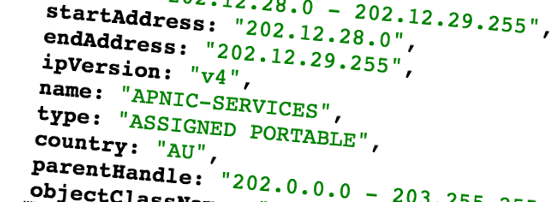
The Registration Data Access Protocol (RDAP) is an alternative means to access Internet Registry data, using current web technologies and protocol design. This alternative to WHOIS is a common query and response format across both number and name registries, a unicode-aware and capable system, and a machine-readable format for integration activities, solving a number of long-standing WHOIS issues.
On 25 March 2015, the Internet Engineering Task Force (IETF) published a set of documents describing RDAP, marking the end of a three-year effort by a wide range of community stakeholders, including ICANN and all five RIRs. This standardization outcome means registries and consumers of registry data are now free to implement clients and servers and inter-operate freely.
Here at APNIC we have a pilot RDAP service which is current with respect to the final state of the standards documents, so stay tuned for an announcement of full-service launch!
The set of published specifications is:
- RFC 7480 – HTTP Usage in the Registration Data Access Protocol (RDAP)
- RFC 7481 – Security Services for the Registration Data Access Protocol (RDAP)
- RFC 7482 – Registration Data Access Protocol (RDAP) Query Format
- RFC 7483 – JSON Responses for the Registration Data Access Protocol (RDAP)
- RFC 7484 – Finding the Authoritative Registration Data (RDAP) Service
- RFC 7485 – Inventory and Analysis of WHOIS Registration Objects
The views expressed by the authors of this blog are their own and do not necessarily reflect the views of APNIC. Please note a Code of Conduct applies to this blog.
